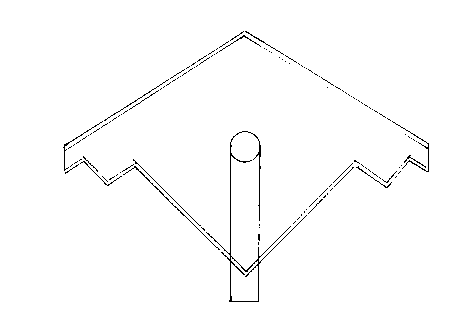Some of the information on this Web page has been provided by external sources. The Government of Canada is not responsible for the accuracy, reliability or currency of the information supplied by external sources. Users wishing to rely upon this information should consult directly with the source of the information. Content provided by external sources is not subject to official languages, privacy and accessibility requirements.
Any discrepancies in the text and image of the Claims and Abstract are due to differing posting times. Text of the Claims and Abstract are posted:
| (12) Patent Application: | (11) CA 2246091 |
|---|---|
| (54) English Title: | NU-HOE |
| (54) French Title: | NU-HOE |
| Status: | Deemed Abandoned and Beyond the Period of Reinstatement - Pending Response to Notice of Disregarded Communication |
| (51) International Patent Classification (IPC): |
|
|---|---|
| (72) Inventors : |
|
| (73) Owners : |
|
| (71) Applicants : |
|
| (74) Agent: | |
| (74) Associate agent: | |
| (45) Issued: | |
| (22) Filed Date: | 1998-09-14 |
| (41) Open to Public Inspection: | 2000-03-14 |
| Availability of licence: | N/A |
| Dedicated to the Public: | N/A |
| (25) Language of filing: | English |
| Patent Cooperation Treaty (PCT): | No |
|---|
| (30) Application Priority Data: | None |
|---|
In this invention the tool embodies a flat surfaced plate whose perimeter
bristles with
hardened, sharpened cutting edges. The tool, because of the central, point-of
balance
placement of a handle stem designed to accept a variety of handle types and
lengths, lies
horizontally flush with the garden soil surface. Garden cultivation, ie.,
sowing and unwanted
vegetation control may be accomplished without lifting, chopping or excessive
bending or
stooping.
Weed control close to or even within the rows of cultured vegetation is aided
by the inclusion
of strategically placed hooking/pulling notches within the perimeter of the
tool's hardened and
sharpened cutting edges. The design and embodiment of the invention herein
described
allows even physically infirm persons to garden with relative ease.
Note: Claims are shown in the official language in which they were submitted.
Note: Descriptions are shown in the official language in which they were submitted.

2024-08-01:As part of the Next Generation Patents (NGP) transition, the Canadian Patents Database (CPD) now contains a more detailed Event History, which replicates the Event Log of our new back-office solution.
Please note that "Inactive:" events refers to events no longer in use in our new back-office solution.
For a clearer understanding of the status of the application/patent presented on this page, the site Disclaimer , as well as the definitions for Patent , Event History , Maintenance Fee and Payment History should be consulted.
| Description | Date |
|---|---|
| Time Limit for Reversal Expired | 2002-09-16 |
| Application Not Reinstated by Deadline | 2002-09-16 |
| Inactive: Adhoc Request Documented | 2002-06-26 |
| Deemed Abandoned - Failure to Respond to Maintenance Fee Notice | 2001-09-14 |
| Application Published (Open to Public Inspection) | 2000-03-14 |
| Inactive: Cover page published | 2000-03-13 |
| Classification Modified | 1998-12-03 |
| Inactive: IPC assigned | 1998-12-03 |
| Inactive: First IPC assigned | 1998-12-03 |
| Inactive: IPC assigned | 1998-12-03 |
| Inactive: Office letter | 1998-10-16 |
| Inactive: Filing certificate - No RFE (English) | 1998-10-15 |
| Application Received - Regular National | 1998-10-14 |
| Abandonment Date | Reason | Reinstatement Date |
|---|---|---|
| 2001-09-14 |
The last payment was received on 2000-09-14
Note : If the full payment has not been received on or before the date indicated, a further fee may be required which may be one of the following
Patent fees are adjusted on the 1st of January every year. The amounts above are the current amounts if received by December 31 of the current year.
Please refer to the CIPO
Patent Fees
web page to see all current fee amounts.
| Fee Type | Anniversary Year | Due Date | Paid Date |
|---|---|---|---|
| Application fee - small | 1998-09-14 | ||
| MF (application, 2nd anniv.) - small | 02 | 2000-09-14 | 2000-09-14 |
Note: Records showing the ownership history in alphabetical order.
| Current Owners on Record |
|---|
| RICHARD C. S. HJELM |
| Past Owners on Record |
|---|
| None |